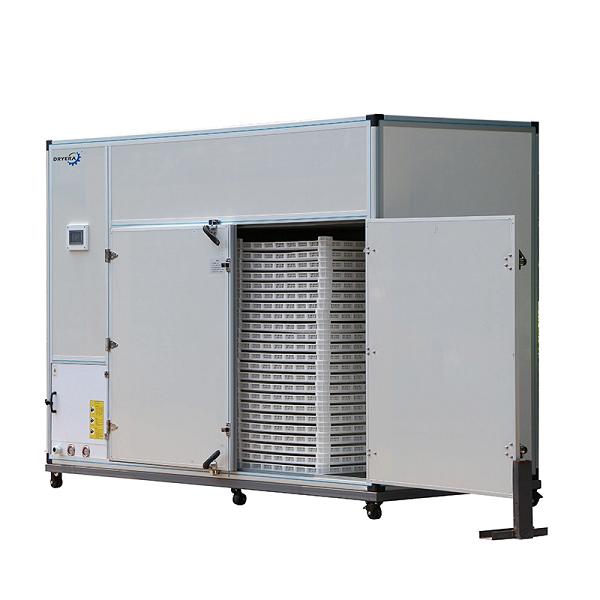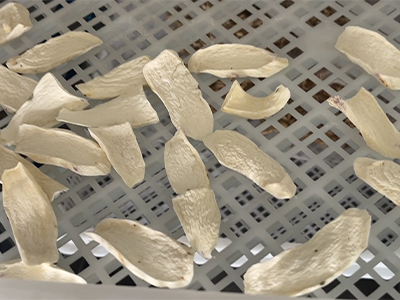
Yams are a staple food in many cultures around the world, prized for their nutritional value and versatility in culinary applications. However, preserving yams for long-term storage can be a challenge, particularly in regions with high humidity or limited access to modern food preservation technologies. Enter yam drying machines – innovative appliances designed to efficiently and effectively dry yams for extended shelf life and preservation. In this comprehensive guide, we'll delve into the functionality of yam drying machines, comparing them to traditional drying methods and highlighting their advantages in terms of efficiency, quality, and versatility. Whether you're a small-scale farmer or a commercial food processor, understanding the benefits of yam drying machines can revolutionize your approach to yam preservation and processing.
Understanding Vegetable Drying Machines
Before we explore the specifics of yam drying machines, let's take a moment to understand the broader category of vegetable drying machines. Vegetable drying machines are specialized appliances designed to remove moisture from vegetables through controlled heat and airflow, resulting in dried vegetables that are shelf-stable and resistant to spoilage. These machines come in various sizes and configurations, ranging from small-scale dehydrators for home use to large-scale industrial dryers for commercial food processing operations. By removing moisture from vegetables, drying machines inhibit the growth of bacteria, yeast, and mold, extending the shelf life of perishable produce and reducing food waste.
How Yam Drying Machines Work?
Yam drying machines operate on the same basic principles as other vegetable drying machines but are specifically tailored to the unique characteristics of yams. Here's how yam drying machines typically work:
●Preparation: Before the yams are placed in the drying machine, they are washed, peeled, and sliced or diced into uniform pieces. This preparation ensures consistent drying and reduces drying time.
●Loading: The prepared yam pieces are loaded onto trays or racks inside the drying chamber of the machine. The trays are arranged to allow for maximum airflow around the yams, ensuring even drying.
●Drying cycle: The drying machine is programmed to control temperature, airflow, and humidity levels within the drying chamber to optimize the drying process. Typically, hot air is circulated through the chamber, drawing moisture out of the yams and carrying it away.
●Monitoring: Throughout the drying cycle, sensors or probes inside the drying chamber monitor temperature and humidity levels, ensuring that the drying conditions remain within the optimal range for efficient and effective drying.
●Completion: Once the yams have reached the desired level of dryness, the drying cycle is complete, and the machine automatically shuts off or alerts the operator. The dried yams are then removed from the machine and allowed to cool before packaging or further processing.
Advantages Over Traditional Drying Methods
Yam drying machines offer several advantages over traditional drying methods, making them an attractive option for yam producers and processors. Let's explore some of these advantages in more detail:

1.Efficiency
Faster drying times: Yam drying machines can dry yams much faster than traditional sun drying or air drying methods, reducing processing time and increasing productivity.
Continuous operation: Unlike traditional methods that rely on weather conditions or manual labor, yam drying machines can operate continuously, allowing for consistent and predictable drying outcomes.
2.Quality
Consistent results: Yam drying machines provide precise control over drying conditions, resulting in uniform drying and consistent product quality.
Retained nutritional value: By drying yams quickly at controlled temperatures, yam drying machines help preserve the nutritional value of the yams, including vitamins, minerals, and antioxidants.
3.Versatility
Year-round operation: Yam drying machines can operate year-round, regardless of weather conditions, allowing for consistent production and supply of dried yams.
Multi-purpose use: In addition to drying yams, many drying machines can also be used to dry other fruits and vegetables, expanding their utility and versatility in food processing operations.
4.Cost-effectiveness
Reduced labor costs: Yam drying machines require minimal manual labor compared to traditional drying methods, reducing labor costs and increasing operational efficiency.
Lower energy consumption: While yam drying machines require energy to operate, their efficiency and precision control result in lower overall energy consumption compared to traditional drying methods.
Conclusion
Yam drying machines represent a significant advancement in the preservation and processing of yams, offering unparalleled efficiency, quality, and versatility compared to traditional drying methods. By harnessing the power of controlled heat and airflow, these innovative appliances enable yam producers and processors to efficiently dry yams year-round, regardless of weather conditions. Whether you're a small-scale farmer looking to extend the shelf life of your yam harvest or a commercial food processor seeking to meet the demands of a growing market, yam drying machines offer a cost-effective and reliable solution for preserving and processing yams. With their ability to deliver consistent, high-quality dried yams with minimal labor and energy inputs, yam drying machines are poised to revolutionize the way yams are preserved and processed around the world.



















